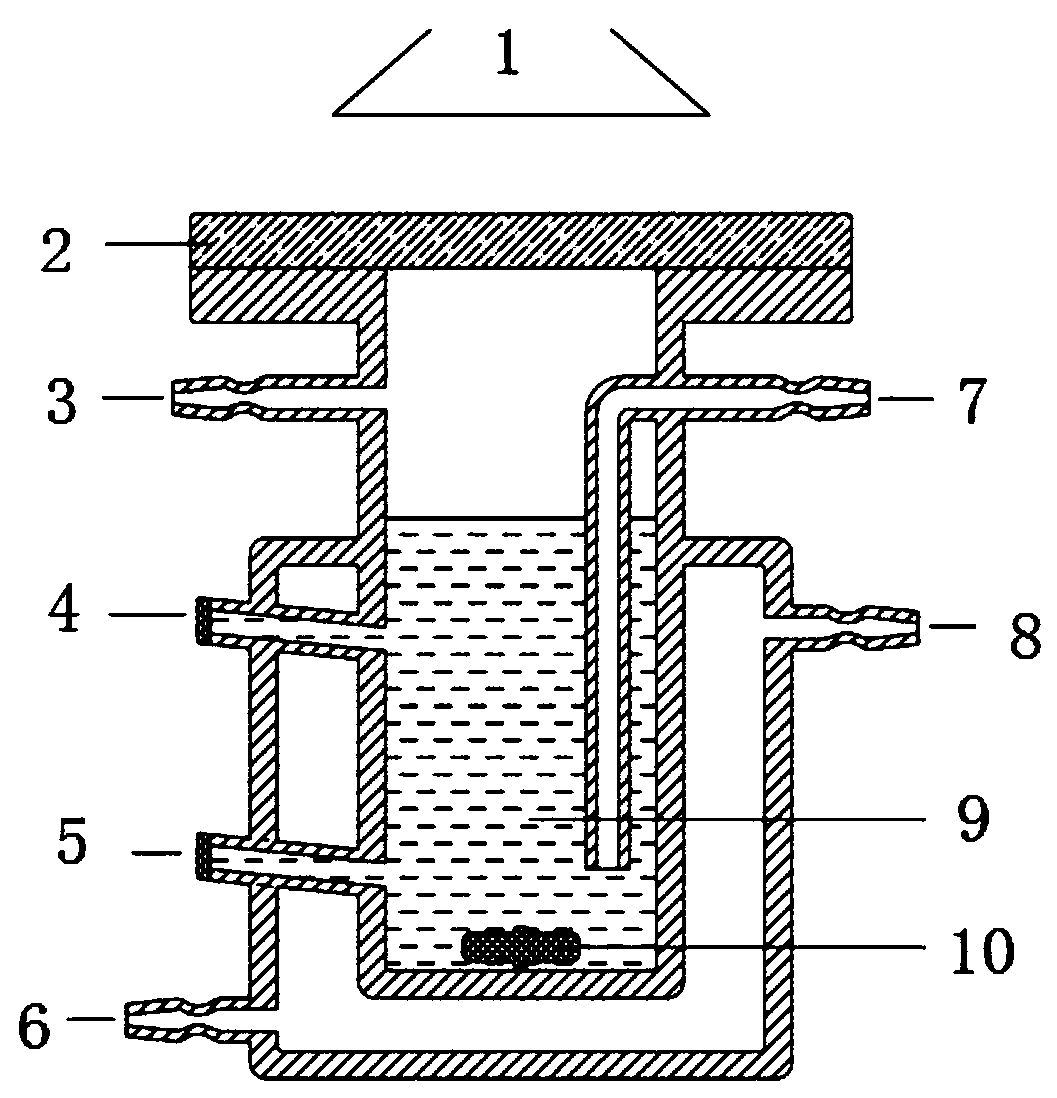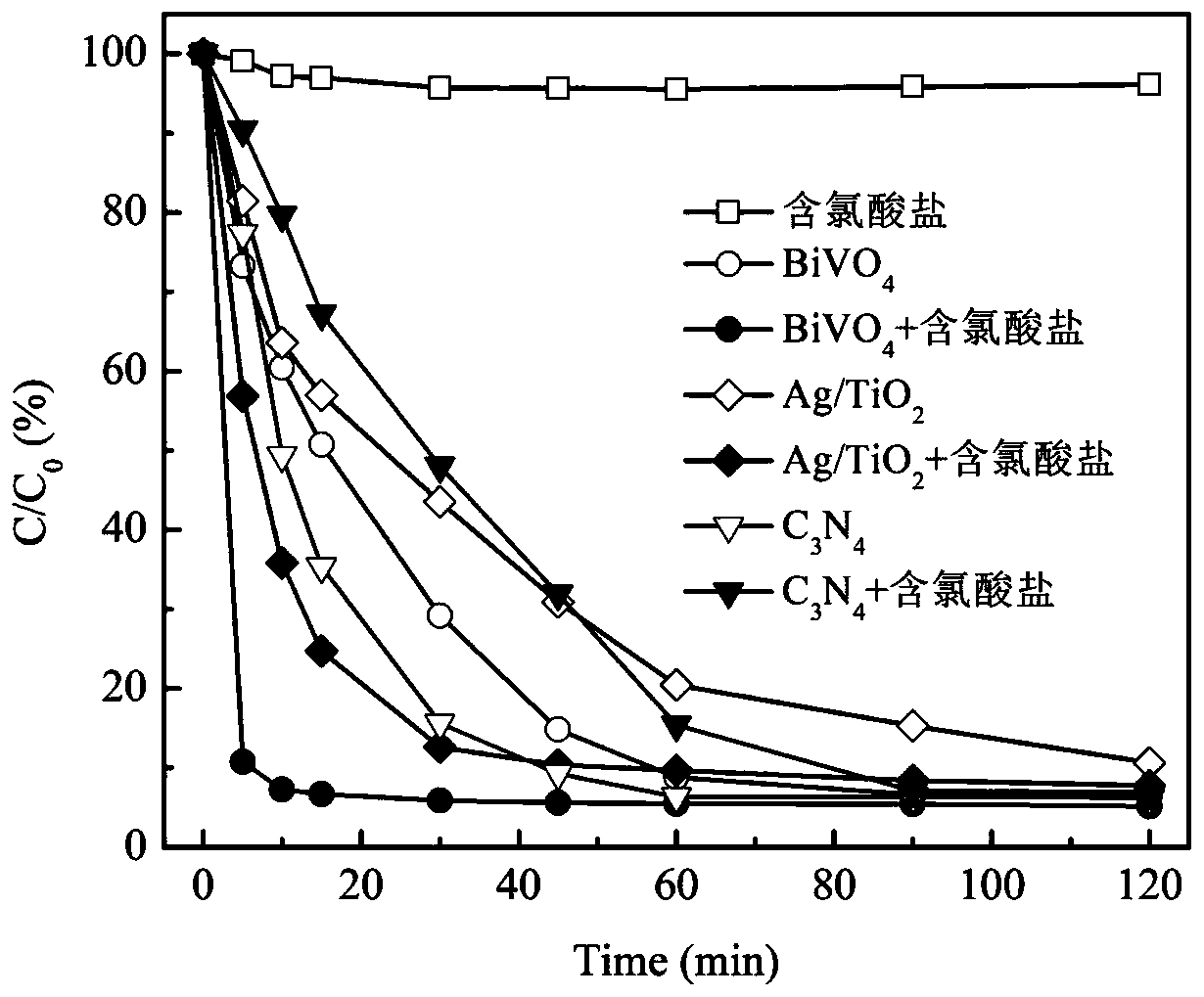Method for efficiently removing organic pollutants in wastewater by combining visible light catalyst-ClO2 oxidation
A technology of organic pollutants and visible light, applied in water pollutants, oxidized water/sewage treatment, chemical instruments and methods, etc., can solve the problems of difficult to eliminate inorganic disinfection by-products, short life of active substances, complex oxidation technology and other problems
- Summary
- Abstract
- Description
- Claims
- Application Information
AI Technical Summary
Problems solved by technology
Method used
Image
Examples
Embodiment Construction
[0010] The present invention is achieved through the following technical solutions,
[0011] A Visible Light Catalytic-ClO 2 A method for efficiently removing organic pollutants in waste water by combined oxidation, comprising the following steps:
[0012] (1) Adjust the wastewater containing organic matter to a constant pH, add a visible light-responsive catalyst, place it in a dark place, and fully stir and adsorb until the adsorption equilibrium is reached;
[0013] (2) Turn on the xenon lamp light source, adjust the distance between the light source and the liquid level of the waste water after step (1), add chlorate to the system, keep the reaction temperature constant, and fully stir to realize the degradation of organic pollutants.
[0014] Preferably according to the present invention, in step (1), the pH is 3-11, and the pH is adjusted by using an acidic regulator or an alkaline regulator.
[0015] Further preferably, in step (1), the pH is 5-9.
[0016] Further pr...
PUM
 Login to View More
Login to View More Abstract
Description
Claims
Application Information
 Login to View More
Login to View More - R&D
- Intellectual Property
- Life Sciences
- Materials
- Tech Scout
- Unparalleled Data Quality
- Higher Quality Content
- 60% Fewer Hallucinations
Browse by: Latest US Patents, China's latest patents, Technical Efficacy Thesaurus, Application Domain, Technology Topic, Popular Technical Reports.
© 2025 PatSnap. All rights reserved.Legal|Privacy policy|Modern Slavery Act Transparency Statement|Sitemap|About US| Contact US: help@patsnap.com



